The Skye terrier is a medium-sized, purebred terrier of Scottish origin. Skye terriers are also commonly referred to as Scottish Skye terriers.
These dogs are good-tempered, loyal, and friendly, but are sometimes shy around strangers. Their shyness around strangers makes this breed good watchdogs. They are also very light shedders, easy to train, and do well indoors as they don’t need much exercise.
Skye terriers were originally bred as hunting dogs, so they have a strong drive to chase small creatures. If you own a cat, or another type of small pet, getting this breed is not a good idea.
Skye terriers typically cost $1,500 to $2,000 USD.
TABLE OF CONTENTS
What is a Skye Terrier?
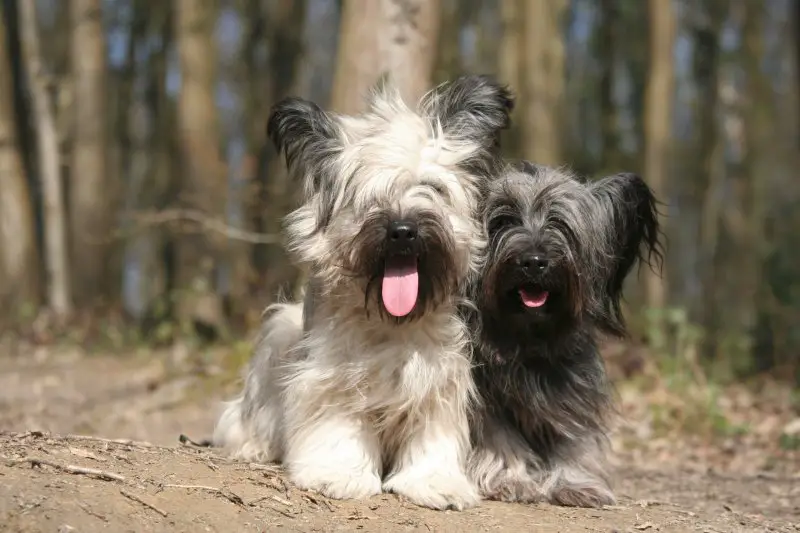
Skye Terriers come from the Isle of Skye in Scotland. They are a medium-sized breed, originally intended to hunt and kill fox, otter, and badger for the farmers who owned the dogs. Despite its short legs, the Skye Terrier has incredible stamina and agility and can overtake game on the run or pull their prey out of burrows to kill them. This is a breed with powerful, sturdy legs that can dig with surprising strength, and a thick double coat to protect him from low lying thorns and branches as he pursues quarry.
The breed has been around for at least four centuries. In a book about dogs published in 1570 by Johannes Caius, Of English Dogges, the author writes, “brought out of barbarous borders fro’ the uttermost countries northward…which, by reason of the length of heare [hair], makes showe neither of face nor of body.” Caius was referring to the Skye Terrier’s long hair, that can completely cover his eyes and snout, and reaches all the way to the ground on either side of its body.
Since Caius mentioned the dog in his book, it must have been a common and well-known breed. But it wasn’t always called the “Skye Terrier”. Other names used for this breed include the Glasgow Terrier, the Fancy Skye Terrier, the Paisley Terrier, the Silky Skye Terrier, and the Clydesdale Terrier.
How did this particular breed end up on the remote Isle of Skye? One theory is that Maltese dogs survived a shipwreck of a Spanish vessel off the coast of the island. They were bred with local dogs on the island, and a new breed was created that was larger than the Maltese and could withstand the harsh weather conditions of Scotland.
When Queen Victoria discovered this breed, it was love at first sight. The Queen raised numerous dogs of all different breeds and had many of their portraits painted. But the Skye Terrier was one of her favorites, leading other aristocrats to acquire pet Skye Terriers of their own to imitate the Queen. Sir Edward Landseer, a famous painter of animals, did a chalk drawing of Queen Victoria’s pet Skye Terrier, “Islay”. In the portrait, completed in 1839, Islay is begging. Islay died in 1844, and the Queen wrote about her pet, “my faithful little companion of more than 5 years … always with me, & … a great darling”.
Another famous Skye Terrier in history was called “Greyfriar’s Bobby”. The story has it that a man named John Gray (who was either a night watchman or a farmer – depending on which version of the story you choose to believe), owned a Skye Terrier. When Mr. Gray died, Bobby reportedly sat on his grave day after day and year after year, mourning for the owner the beloved owner who would never return.
In 1867 Sir William Chambers, director of the Scottish Society for the Prevention of Cruelty to Animals, and also Lord Provost of Edinburgh, paid for a license and collar for Bobby. (These remnants of the loyal Skye Terrier are now on display at the Museum of Edinburgh). Townspeople fed him, and he was a comfort to people who visited the cemetery for all the years he lived there. After waiting for John for 14 years, Bobby died in 1872. Bobby was buried just inside the gate of Greyfriar’s Kirkyard cemetery, not far from John’s final resting place.
One year later, Lady Burdett-Couts – a British philanthropist – had a sculpture of Bobby made, complete with a drinking fountain. It was erected just opposite the cemetery’s entrance to memorialize the loyal pet. The sculpture has been listed as a historical site by the Scottish government and has such a popular tourist attraction that it was actually damaged by too many hands touching and stroking it.
In 1881, an artist named Vero Shaw produced a color lithograph of a pair of Skye Terriers and included it in The Illustrated Book of the Dog.
After gaining so much popularity in the United Kingdom, the Skye Terrier was recognized by the American Kennel Club by 1887. For a while, Skye Terriers appeared in dog shows, but today it is one of the least known terrier breeds. By 2005 there were only 30 of this unique breed born in the United Kingdom. Some experts believe that in the next 40 years, Skye Terriers will be extinct. Devoted breeders are trying to make sure Skye Terriers don’t disappear from the world, but if nobody is interested in purchasing their puppies, the breeders will cease to raise them.
It would be a shame for this interesting breed to disappear from the world. They make excellent watchdogs, and will fearlessly keep mice and other vermin away from your property. On the other hand, Skye Terriers are affectionate and devoted to their owners. They even warm up quickly to strangers – your friends and guests in your home – if no threat is detected.
Appearance
Something about a Skye Terrier’s overall look makes him somehow extremely appealing, even though he is a short and stocky dog. His gait is not lumbering like a bulldog, but surprisingly brisk and jaunty. His coat is long but extremely silky and straight. The Skye Terrier holds his head high, like royalty, and gives an impression of elegance and cockiness at the same time.
Skye Terriers have bodies that are twice as long as they are tall. The back is held straight, the shoulders are broad, and the chest is deep. Skye Terrier’s ears are medium-sized and placed high on their heads, and can either stand straight up or hang down flat against their heads. Long hair hangs over the forehead and eyes, but the striking head with its powerful jaw and perfectly aligned scissor bite make this breed look more like a Roman soldier with a chiseled profile than an unkempt vagabond.
Bright black eyes and a shiny black button nose give the Skye Terrier a curious and intelligent expression. While it’s difficult to pinpoint which of its features are most distinctive, Skye Terriers manage to emanate charm and elegance, even as they are digging into a muddy burrow in pursuit of a pesky rodent.
Skye Terrier Weight and Size
Male Skye Terriers reach a height of 10 inches, and females are just slightly shorter, at nine and a half inches tall. The male adults weigh between 35 and 40 pounds (16 – 18 kg). Female Skye Terriers are significantly lighter, weighing between 25 and 30 pounds (11.5 – 14 kg).
With bodies that are much longer than they are tall and very short legs, Skye Terriers don’t handle extra weight well. Obesity in the breed not only limits the dog’s mobility, but it can be a very serious health risk.
Common Colors
A black nose and ears are a must for all Skye Terriers. The tips of its ears and tail may also be dark black. The fur can be almost any solid color, including blue, light and dark gray, fawn, cream, or black.
A purebred Skye Terrier will not have any spots or markings on its coat, and closed to the skin there will be one color only. However, in the outer coat, that color may vary in shades on different parts of its body.
Occasionally there are Skye Terriers with a spot of white on their chests, but it can never be larger than two inches in diameter.
The color of a Skye Terrier puppy’s coat may change as it grows, up to the age of 18 months. But even puppies will never have any patterns or designs in their coats. Solid colors only are acceptable in purebred Skye Terriers.
One exception to this rule is a black stripe encircling the body of cream-colored Skye Terriers.
Coat
Skye Terriers has a double coat. The undercoat is soft and woolly and lies close to the body. The topcoat is coarse and straight and grows quite long. The hair on a Skye Terrier’s body hangs down to either side, parting in the middle from head to tail. The body hair can grow to a length of at least five and a half inches, and sometimes all the way to the floor. The hair on its head hangs down in bangs in front of its forehead and eyes and continues down around the face like a beard. The ears are also fringed by feathery hair that hangs straight down from the tips and outer edges, blending in with the facial hair. Long hair on a Skye Terrier’s chest is called its “apron”.
Personality and Temperament
Skye Terriers have a great sense of self-respect and aren’t those pushover kinds of dogs that grovel at your feet begging for attention. If you give your Skye Terrier sincere love and affection, and as much attention as he lets you know he needs, he will reciprocate with noble demonstrations of equal measures of adoration.
This is a fearless, confident breed when faced with other animals, but around people, the Skye Terrier can be wary and reserved. Skye Terriers need to be in charge of interactions with new people in their lives, setting the tone for how close to let a stranger get, and how friendly they can behave towards each other.
With family and good friends, your Skye Terrier will be playful and fun-loving, and basically happy and content most of the time.
Behavior around other dogs
Bred to hunt and capture small animals, the Skye Terrier is fearless around other dogs. On the other hand, Skye Terriers don’t seek companionship with other pets. They don’t need to be part of a pack, even that pack is comprised of some of the neighborhood dogs.
Skye Terriers won’t enjoy going to the local dog park and don’t need play dates with your best friend’s dog. They prefer to spend time with humans, soaking up attention and showing off their hunting prowess. Chasing and searching for balls and sticks is an excellent way for a Skye Terrier to satisfy his need to catch prey. If you have a cat or bird, or any other small mammal as a household pet, you will have to guard it carefully from your Skye Terrier.
When encountering strange dogs on walks, your Skye Terrier will at best turn a cold shoulder, and at worst will snap at the offending member of his own species who dared to cross his path. But if you raise other dogs in your home, and expose your Skye Terrier to them at an early age, he will learn to love them and interact with them as much as he does with the human members of his family.
Is a Skye Terrier a Good Family Dog?
By nature, Skye Terriers can either be shy or aggressive. Therefore, it is important to socialize them with as many people as possible while they are still puppies. You must teach your Skye Terrier that any strangers you let into your home must be graciously welcomed, and not growled or barked at.
Skye Terriers are wonderful dogs for people that live in small apartments, and for single people or couples with no children. They also do well with older children who understand how to interact with dogs without scaring or hurting them. While they don’t need a lot of space to exercise, they do need a lot of human contact. If you choose a Skye Terrier to bring home as your family pet, make sure there is enough actual family time with your dog! This is not a breed that can be left alone for hours on end day after day. Too much solitude will cause a Skye Terrier to become destructive.
How to Train a Skye Terrier
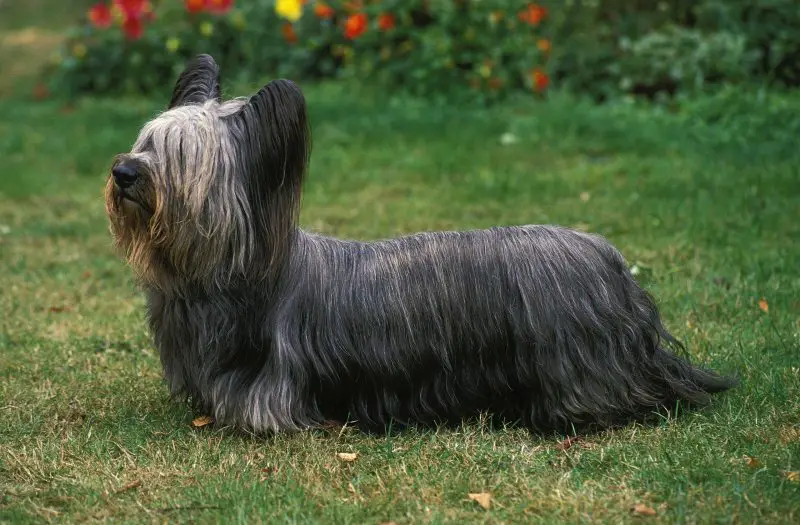
When compared to other terrier breeds, the Skye Terrier is incredibly calm and sensitive. However, like all other terriers, the Skye Terrier can also be extremely stubborn and strong-willed. Training a Skye Terrier will involve a lot of patience, determination, and consistency on the part of its owner.
Skye Terriers are very vocal and make use of their wide range of sounds to get you to take notice of them. As an owner attempting to train your new puppy, you should take advantage of every attention-seeking moment that you can to teach and demand that your Skye Terrier gives you something in return. A Skye Terrier isn’t a breed who will obey you because he has a strong desire to please you, but rather because he thinks he will benefit from the deal!
The first thing when it comes to dog training is to let your Skye Terrier know that people are wonderful! If you don’t socialize him early and often, there’s a chance he will grow up to be a fearful dog that never leaves your side or a yappy dog that tells visitors they aren’t welcome in his home. If your Skye Terrier learns to accept and trust strangers, he will also learn to enjoy all the attention they give him. As an added perk, your friendly dog will serve as a great icebreaker in awkward social situations.
Never use an angry or threatening tone of voice when training your Skye Terrier. You can always remove him from an area or a situation where he is misbehaving, and keeping him away from you for a while will be punishment enough. When it comes to Skye Terriers, the best results are received when you use love, rewards, and attention as incentives to teach them to obey.
Even the most loyal Skye Terrier can be stubborn at times. They love to be in charge, and it will be a challenge to convince them to let you be the leader sometimes. If you are creative, you can think of ways to integrate sniffing and hunting for a treat as part of your training sessions. Skye Terriers love to search for and catch prey, so utilizing that instinct to help your pet get his reward for obedience will always have a positive outcome.
Once your Skye Terrier accepts you as his commander as well as his beloved friend, he will do almost anything you ask in a show of loyalty. Historically, this breed did not only chase their prey over land and dig into burrows to make a catch, but they also dove into freezing rivers and streams in pursuit of badgers and otters. Once they have a goal in mind, they don’t give up trying to achieve it until they succeed. So if you can use that determination and stubbornness to your advantage, you will end up with a very well trained dog.
How To Care For a Skye Terrier
Exercise Requirements
Skye Terriers were bred for a very specific purpose – to hunt and kill vermin. Therefore, they don’t need to be taken on long, exhausting hikes, and won’t enjoy being taught to run obstacle courses or jump through flaming hoops. On the other hand, playing with you for two hours a day inside won’t give your Skye Terrier the same satisfaction as even a half-hour stroll around the block. All dogs need daily outings, and the Skye Terrier is no exception. Don’t let his relatively small stature convince you that your house is large enough to fulfill his exercise needs. If you can take him out twice a day, even better.
This is a dog that needs daily walks, preferably with a different route every day, so they can explore and smell the environment. Even though you probably won’t need your Skye Terrier to hunt for you, he will still benefit mentally and physically if he imagines that is what you are doing when you go on walks.
When they aren’t at work keeping your castle free of mice and rats, your Skye Terrier prefers living indoors. They enjoy human company, and since they aren’t guarding or herding dogs have no desire to patrol your yard for hours on end. Don’t think that if you leave your Skye Terrier out in your expansive yard to roam around off-leash, his exercise needs will be satisfied. He can spend an hour or two a day there when the weather is fine. But if you leave your Skye Terrier outside all day and all night, he will just start to feel lonely, and may even start digging up your garden out of frustration. When you are at home, let him be inside with you. Would you like to be locked out in the yard after a good workout at the gym? Of course now. Once you’ve met your exercise quota for the day, all you want to do is sit on the couch to read or walk TV. Well, guess what? Your Skye Terrier feels just the same.
Take care not to let your Skye Terrier puppy exert himself too much before he is about eight to ten months old. Their bones are very soft, and if they run or jump too much when they are young, Skye Terriers can develop painful limps and even bowed legs. Don’t take him on very long walks, don’t let him jump off high furniture, and don’t encourage him to climb over high objects like walls or fences. If you want a ninja dog, get a German Shepherd!
Grooming and Shedding
Even though Skye Terriers have long, silky hair, it doesn’t need to be shampooed often. If you are conscientious about combing its coat at least twice a week, your Skye Terrier’s coat will stay smooth and orderly. A long-toothed comb is the best type to use on a Skye Terrier’s coat to prevent tangles.
Shampooing your Skye Terrier often won’t make it’s coat any softer than it already is. Once a month is the most often you should bathe this breed. On the other hand, areas around your Skye Terrier’s eyes and mouth may need more frequent cleaning, as food and other dirt tend to get caught in its facial fur.
There is no need to trim your Skye Terrier’s hair, and of course, it should never be completely shaved off. The think undercoat protects this breed from extreme temperatures and injury from low-lying bushes and bramble. This is a breed with a beautiful “natural look” that needs very little grooming to keep up a good appearance.
Since your Skye Terrier puppy won’t be running around on rough terrain for almost a year, until its bones are strong enough to withstand vigorous exercise, you will definitely need to regularly trim its nails. Every two weeks to a month should be often enough. The Skye Terrier’s ears should also be checked for excess dirt and wax and wiped clean at least once a week.
Skye Terriers shed very little. This is a great dog for owners who don’t want to be constantly vacuuming dog hair off their carpets and couches.
What To Feed A Skye Terrier
Skye Terriers love their food almost as much as they love hunting. A Skye Terrier will eat everything you feed it, whether it is truly hungry or not. It would be a shame for your well-formed Skye Terrier to get so fat it resembles a pig in a fur coat. To keep your pet from gaining too much weight, you need to carefully monitor its food portions.
A Skye Terrier puppy should be fed puppy food according to your vet’s recommendations in terms of the type of food and amounts. But by the age of eleven months, your Skye Terrier can begin eating kibble for adult dogs. Dry food is always better than wet, as it helps prevent dental problems such as tooth decay, plaque accumulation, gum disease, and halitosis. There are certain brands of dog food manufactured especially to prevent tooth decay, and if you are lucky your Skye Terrier can live up to fourteen years without any dental problems at all.
The optimal amount of food for an adult Skye Terrier is one to one and a half cups of high-quality kibble per day. Calorie count can differ from dog to dog, so it’s wise to consult with your vet if your Skye Terrier is exceptionally sedentary, or overly active. A normal adult Skye Terrier needs about 660 calories per day. An extremely active dog can eat up to 730 calories per day, and a senior or less active dog only needs 590 calories. Now imagine you decide to treat your pet to a piece of cake or a couple of hot dogs fresh off the barbecue. A slice of sponge cake has 424 calories, and two hot dogs have about 580 calories. The dog’s “treat” alone contains almost his daily allowance of calories. So if you get into the bad habit of feeding your Skye Terrier table food, you will soon have an overweight, unhealthy pet.
Choose a dog food brand and formula that is rich in protein and low in carbohydrates. The first ingredient of any food you feed your Skye Terrier should be meat, such as fish, chicken, lamb, or beef. The carbohydrate ingredients should include oats, barley, and/or sweet potato, as opposed to corn, soy, or wheat.
Known Health Problems
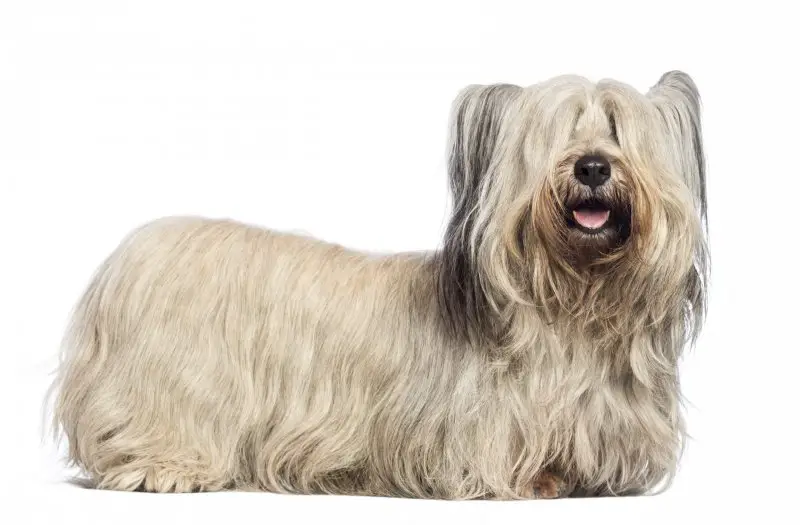
Though they are relatively healthy dogs, Skye Terriers are very prone to back problems, particularly disc injuries. Skye Terrier puppies should be supervised at play, so they don’t jump from any height onto hard surfaces or run up and down stairs too much. Degenerative disc disease afflicts many short-legged dogs, with ten percent of Skye Terriers falling victim to it.
All mammals have rubber-like discs in their spines, located between the vertebrae. These discs prevent friction between the spinal column bones when the back moves in all directions. The discs have hard outer shells and a sort of gel material on the inside. When a dog suffers from degenerative disc disease, the outer shell of one or more of the discs cracks, and the inner gel seeps out and presses on the spinal cord, causing pain. In severe cases, this condition can cause total paralysis.
If your Skye Terrier has degenerative disc disease, he may show one or more of the following symptoms:
- Refusal to play
- Shivering
- Cringing or yelping when you pet your dog, or if you attempt to move him or pick him up, due to severe back pain
- A strange position, such as an arched back or tucked head, while lying down or standing
- Failure to bend towards his food or water bowl to eat and drink
- Abnormal gait or loss of balance
Over 95% of the cases of degenerative disc disease heal by themselves in a matter of days. If you suspect your Skye Terrier is suffering from the painful and debilitating condition, let him rest and let nature take its course. If he is lucky, you will notice a marked improvement. But for the 5% that don’t get better by themselves, there are several courses of treatment. Your vet may prescribe for your Skye Terrier pain relievers and anti-inflammatory drugs and may tell you to restrict the dog’s movement. In some cases, surgery is the only route to take. If your Skye Terrier has become paralyzed, the chances of a full recovery are much higher if he receives surgery within the first 24 hours of him developing this condition.
Skye Terriers can also develop cancer, skin allergies, hyperthyroidism, and hip dysplasia, though all of those conditions are not common in this breed. The leading cause of death in Skye Terriers is mammary cancer.
Mammary cancer in dogs is the equivalent of breast cancer in humans. It is most common in female dogs that have not been spayed. So if you are raising a female Skye Terrier for the purpose of breeding, keep in mind that you may enjoy a few litters, but your pet is also at risk of developing this disease between the ages of seven and thirteen years old. Symptoms of mammary cancer are palpable lumps on the neck or in the groin. If you suspect your Skye Terrier has a lump, take her to the vet for a biopsy. Depending on whether the lump is benign or malignant, your vet will explain possible courses of treatment.
Because they don’t have any hereditary diseases, the Skye Terrier is one of the few breeds that is not required to have specific health tests before being put up for sale.
Buyer’s Guide
How to Choose a Skye Terrier Puppy
According to Kennel Club rules, a Skye Terrier dam (female dog) can only be safely bred four times in her lifetime, and she cannot begin having litters if she is too young. Whenever you start researching Skye Terrier breeders, ask to see the pedigrees for the parents of the litter you are interested in. The documents should provide you with information about the puppies’ vaccinations, microchips, health exams, and lineage.
Healthy Skye Terrier puppies are energetic and curious. When choosing a puppy from a litter, don’t go for one that is too quiet or “well behaved”. Those traits aren’t normal for Skye Terriers and may be a sign that a dog is overly timid. Choose a puppy that is friendly and approaches you as soon as he sees you. Socializing a Skye Terrier with other people and dogs will be easier if the one you choose shows an interest in other creatures, to begin with.
Male Skye Terriers are usually about one to two inches taller, and about five pounds heavier than their female counterparts. Both genders love to play and are wary of strangers, but the males will attempt to accompany you everywhere you go, while the females can tolerate spending more time alone.
If you are worried about owning an aggressive dog, keep in mind that Skye Terriers should be socialized at an early age to teach them that not everything that moves is prey. On the other hand, even with the best training to be had, female Skye Terriers are somewhat more aloof than males.
How Much Do Skye Terriers Cost?
Since there are very few breeders raising and selling Skye Terriers, the cost of a puppy is quite high. Also, puppies are not always available, and after choosing a breeder that you trust you will probably be added to a waiting list for a puppy.
The average price for a purebred Skye Terrier is between $1500 and $2000 dollars. When spending that much money for a dog, at least you can be confident that people breeding Skye Terriers are committing to preventing their extinction. Therefore, the breeders are usually very conscientious when it comes to ensuring their dogs are healthy and well cared for.
Quick Breed Summary Table
There are many terrier breeds to choose from, and they are all equally adorable. The American Kennel Club recognizes 30 types of terriers, while the United Kingdom Club lists 44! The word Terrier comes from the French word terrier which means “burrow”, and historically terriers were dogs bred to hunt vermin. Members of the terrier type of dog can weigh anywhere from 2 pounds (1 kilogram) to 71 pounds (32 kilograms), and come in all different shapes and sizes. Dog clubs have divided Terriers breeds into five groups, based on size and function. What is common to all Terriers is their fearlessness, feistiness, and their excellent hunting skills, but over the years the different breeds have developed their own unique traits.
How do you know if the Skye Terrier is the right choice when there are so many other breeds to consider? The table below offers a quick comparison of the Skye Terrier to two other breeds originating in Scottland, to help you reach a final decision. But it’s is probably a good idea to interact with a few dogs in person, so you can get a feel for the subtle differences between each breed’s personality
| Breed | Skye Terrier | West Highland White Terrier | Scottish Terrier |
| Size | Weight: 25-40 pounds (11.5-18 kg) Height: 9.75-10.25 inches (25 – 26 cm) | Weight: 13 – 22 pounds (6 – 10 kg) Height: 9 – 12 inches (23 – 30 cm) | Weight: 19-23 pounds (8.5-10.5 kg) Height: 10 – 11 inches (25 – 28 cm) |
| Coat | Straight and silky | Straight and dense | Wiry and coarse |
| Temperament | Friendly, loyal, fearless, very easy going, moderately stubborn | Affectionate, independent, alert, moderately stubborn | Playful, independent, alert, extremely stubborn |
| Grooming | Average grooming requirements, little or no shedding | High grooming needs, little to no shedding | Average grooming requirements, little or no shedding |
| Family Dog | Moderately Child-friendly, moderately good for senior citizens, not cat friendly | Highly child-friendly, stranger friendly, gets along well with other pets – including cats but doesn’t do as well with dogs | Highly child-friendly, very good for senior citizens, doesn’t do well with other pets but enjoys playing with other dogs |
| Exercise Requirements | Average energy level, need an average amount of exercise | Very high energy level, need a lot of exercise | Very high energy level, need a lot of exercise |
| Training | Easy to train, low to average intelligence | Very easy to train, average intelligence | Easy to train, low to average intelligence |
| Health | Susceptible to: Achondroplasia, Degenerative disc disease | Susceptible to: Craniomandibular Osteopathy, Atopic Dermatitis, Globoid Cell Leukodystrophy, Cataracts, Inflammatory Bowel Disease (IBD), Hyperplastic Dermatosis, Patellar Luxation, Legg-Perthes Disease, Pulmonary Fibrosis, Shaker Syndrome (White Dog) | Susceptible to: Patellar Luxation, Von Willebrand’s Disease, Scottie Cramp, Craniomandibular Osteopathy |
| Average Price | $1500 – $2000 | $1000 | $800 |
Summary
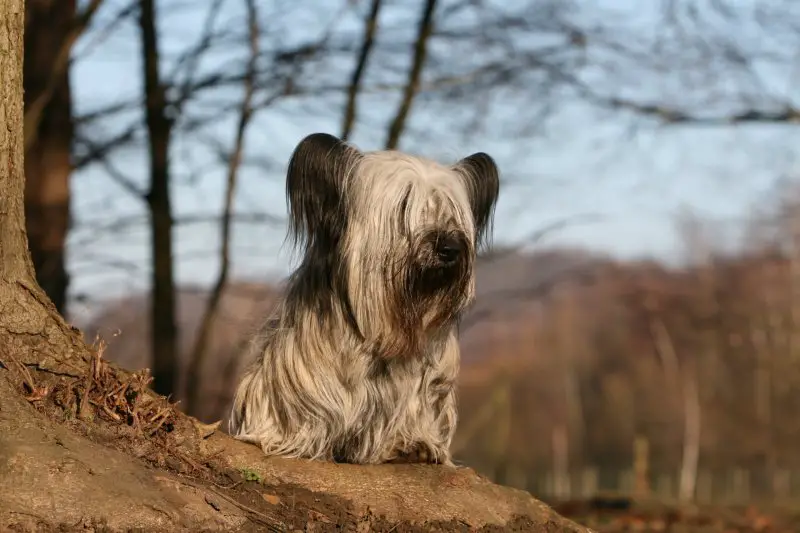
The Skye Terrier is an intelligent, good-tempered, loyal dog. He will be happy living in an apartment as much as in a large house with a yard, as long as you are often around to give him love and attention. While this breed has an elegant look and carries itself like a real aristocrat, when the opportunity arises to chase and catch, this dog is a real ruthless chasseur.
On the one hand, you can train your Skye Terrier to be a gracious, friendly host when you entertain guests. On the other hand, he is a great watchdog who will present his most threatening demeanor and bark incessantly at approaching strange people or canines.
Whether you get your Skye Terrier from a breeder associated with the UK Skye Terrier Club, or the American Kennel Club, you can be sure that the dog you bring home will be worth the wait and the cost. This breed is a loving pet, a courageous bodyguard, and an attractive piece of conversation-starting home décor all rolled into one.



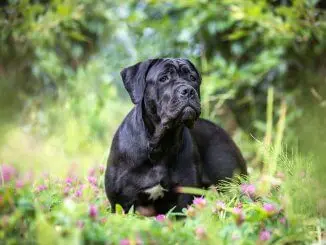
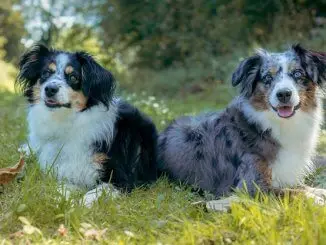
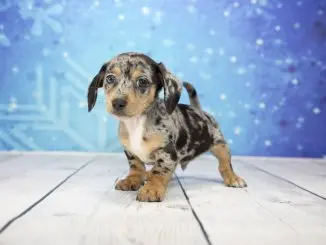
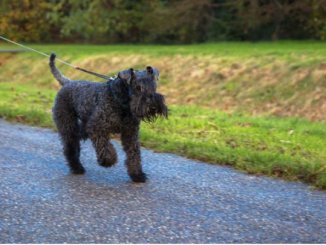
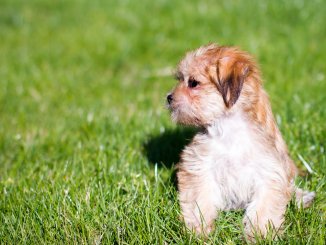
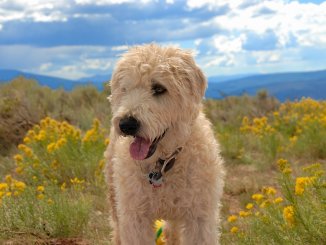
Be the first to comment